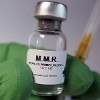As a way of introducing students to the tasks and skills involved in creating health communication products, MastersinCommunications.com interviewed professionals in the field regarding a project they were involved in. Every communication product and project should include some combination of the following steps:
Identify Goals, Audience, and Scope
Hospitals and cancer treatment centers around the country all use a variety of literature to educate and help patients have a better experience. The project in this case study focused on creating a manual with all the necessary information for general cancer treatment in one easy-to-use printed format. The information included education and suggestions on chemotherapy, radiation therapy, and surgery. The initial intention was to distribute the manual in local hospitals as a prototype and then offer it to major cancer centers around the U.S.
Strategy, Planning and Research
The creator of the manual was a cancer survivor, and the product combined their personal experience as a patient, with their education and work in the biological sciences, and knowledge of communication theory, practices, and skills. The manual would be grounded in scientific, evidence-based research, to improve the patient experience for people diagnosed with and receiving treatment for cancer.
To plan the general outline and content of the document, research was gathered and analyzed from a variety of different cancer treatment facilities. This included data focused on medical providers as well as patient information documents.
The author also looked at information in the communication field regarding the connections between design, font, color, medium, and format and how they influence the user experience, as each of these elements would impact how readers intellectually understand and emotionally respond to the manual’s contents. At the time of the project, media studies indicated that people were much more comfortable looking at information about cancer and treatment in print form rather than video, audio, or online. A cancer diagnosis can create a sense in the patient of being out of control of their health and overall life. Having a physical manual available made the experience more personal, and allowed the patient and their support system to feel that they were in control of when and how the information was provided. Information presented via video or audio, on the other hand, gave the user less control, confronting them with information they were not yet ready for. Since many cancer patients are older, statistics indicated they might not have the skills needed to find information online or to comprehend the information in that medium. The final conclusion was that a printed manual was a more active and user-regulated format, while the other mediums were more passive and could potentially cause patients to feel powerless when using them.
The final phase of research was to look at the specifics of the cancer treatment process through information gathered from the major national cancer research centers and conversations with medical providers.
Develop Content
Developing the specific outline and content for the manual was a challenge, as there was a lot of information about cancer and potential treatment options to present. It was also important to provide the most up-to-date and reliable information possible, as well as display it in an easily digestible manner. A linear outline was created to move the reader from symptoms to diagnosis to treatment. At that point, the information was separated into categories and then refined. Part of the task was to implement the evidence-based information and gear it toward the needs of the reader, who is generally not trained in medical terminology. The outline was influenced by information provided by other facilities as well as the actual linear experience of the patient. The author chose not to cover the post-treatment phase in depth, since experiences can differ radically at that point. Information for patients with end-stage diagnosis who were not going to survive, which covered resources such as hospice, was only touched on briefly.
Test, Review, Revise
To test the manual, volunteers were collected through a request in the local newspaper for a small-scale usability study. The survey indicated the manual received strong approval from participants, and all the suggestions for possible edits to the content and design were integrated. In addition to the study volunteers, local cancer nurses also reviewed the manual. As it turned out, the nurses’ beliefs regarding what the patients needed were actually quite different from what patients said they wanted. This unexpected discovery increased the value of the manual by showing that medical professionals may not always fully understand the needs of patients receiving care.
Production and Conclusion
Copies of the manual were created for the patient and medical professional reviewers, however, the document never went into a final production run for various reasons unrelated to the content. The process for creating this manual is still an important case study on how to approach a document of this type.
Health communication products can be initiated by a variety of sources and take many different forms. While many projects are given a green light at their inception, some die on the vine. As a communication professional, it is important to always keep the goal of the project in mind and focus on the quality of work throughout the process, whether or not it results in a final product. Products that are put aside for one reason or another are often taken back up years later in a new form and work is never wasted. Case in point, the content and manual discussed in this case study have since been repurposed as a book that is currently being written.
Additional Health Communication Case Studies:

Public Health Communications for Measles Outbreak
When a measles outbreak hits a small rural community, health professionals must figure out how to inform the public about potential risks and prevention strategies. This case study examines how the local health department responded to the crisis.

Risk Communication and Social Media Campaigns
This case study details how one risk communication organization uses social media to provide up-to-date information during a natural disaster. It includes a breakdown of the strategy employed amidst such events, as well as the training involved to prepare.


